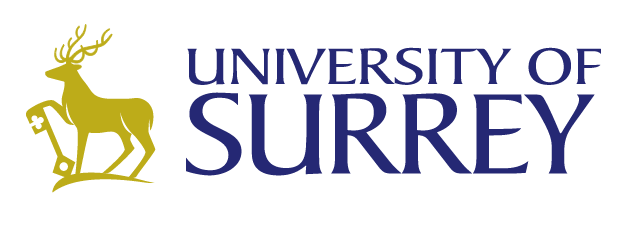TILAPA OTOMI
- Facts
- Sources of the data
- Orthography
- Verb types
- Verbal inflection
- Inflectional classes by inflectional formatives
- Inflectional classes by stem alternations
Facts
Otomi is a small language family within Oto-Manguean and Tilapa Otomi is the most conservative and the most endangered of all Otomi languages. It is spoken by about a dozen elderly people in the village of Santiago Tilapa in the State of Mexico.
Sources of the data
Data courtesy of Enrique L. Palancar.
Orthography
| IPA notation |
Source notation |
|---|---|
| NASALITY | ¨ |
| ɘ | ø |
| ɔ | å |
| EJECTIVE | ’ |
| ʃ | x |
| tʃ | tx |
| j | y |
| ɾ | r |
Verb types
Verbs in Tilapa Otomi may be active or middle. Middle verbs have a stem with a nasal prefix. This information is indicated in the database.
Verbal inflection
Like a typical Otomi language, verbs in Tilapa Otomi inflect for various TAM values and for person of the subject by means of a series of clitic words that precede the verbal stem, which we refer to as inflectional formatives.
Note: For practical purposes, in the database we treat such formatives as if they functioned like affixes.
| Realis | |||
|---|---|---|---|
| INCPL | 1st | trá | xithe |
| 2nd | grá | xithe | |
| 3rd | ra | xithe | |
| HAB | 1st | trɨ́ | xithe |
| 2nd | grɨ́ | xithe | |
| 3rd | rɨ́ | xithe | |
| CPL | 1st | tɨ́ | xithe |
| 2nd | gɨ́ | xithe | |
| 3rd | bi | xithe | |
| PRF | 1st | xtɨ́ | xithe |
| 2nd | xkɨ́ | xithe | |
| 3rd | xɨ́n | xithe | |
| PPRF | 1st | xtá | xithe |
| 2nd | xkí | xithe | |
| 3rd | xkán | xithe | |
| Irrealis | |||
|---|---|---|---|
| INCPL | 1st | gra | xithe |
| 2nd | gra | xithe | |
| 3rd | tra | xithe | |
| CPL | 1st | gɨ | xithe |
| 2nd | gi | xithe | |
| 3rd | ta | xithe | |
| PST | 1st | gɨgɨ | xithe |
| 2nd | gigi | xithe | |
| 3rd | tigi | xithe | |
| PRF | 1st | xkɨgɨ | xithe |
| 2nd | xkigi | xithe | |
| 3rd | xti | xithe | |
| PROSP | 1st | xtágɨ | xithe |
| 2nd | xtági | xithe | |
| 3rd | xtá | xithe | |
Notes:
- A number of intransitive verbs inflect for subject by means of person suffixes:
rá ndoh-ki
INCPL be.big-1SO
‘I'm big/old.’ - These verbs fall into three subclasses, which we call ‘stative’, ‘patientive’ and ‘inchoative’. To inflect for TAM, these verbs use markers of 3rd person. This information is given in the database.
- Patientive verbs receive the same markers as other active verbs.
- Stative verbs select markers rá for INCPL.REALIS and trá for INCPL.IRREALIS.
- Inchoative verbs use the marker tɨ preceding the stem when the aspectual reading is dynamic, and inflect.
| Realis | INCPL | rátɨ | htïn-gi | ‘I'm getting drunk’ |
| HAB | rɨ́tɨ | htïn-gi | ‘I get drunk’ | |
| CPL | bwɨtɨ | htïn-gi | ‘I got drunk’ | |
| PRF | xɨ́n | htïn-gi | ‘I'm drunk’ | |
| Irrealis | CPL | tɨdɨ | htïn-gi | ‘I'll get drunk’ |
| PROSP | xtátɨ | htïn-gi | ‘I'm about to get drunk’ |
Inflectional classes by inflectional formatives
Verbs fall into three inflectional classes attending to the different inflectional formatives they select.
| Class I |
||||
|---|---|---|---|---|
| ‘water’ | ||||
| Realis | INCPL | 1st | xithe | |
| 2nd | xithe | |||
| 3rd | xithe | |||
| HAB | 1st | xithe | ||
| 2nd | xithe | |||
| 3rd | xithe | |||
| CPL | 1st | xithe | ||
| 2nd | xithe | |||
| 3rd | xithe | |||
| PRF | 1st | xithe | ||
| 2nd | xithe | |||
| 3rd | xithe | |||
| PLUP | 1st | xithe | ||
| 2nd | xithe | |||
| 3rd | xithe | |||
| Irrealis | INCPL | 1st | xithe | |
| 2nd | xithe | |||
| 3rd | xithe | |||
| CPL | 1st | xithe | ||
| 2nd | xithe | |||
| 3rd | xithe | |||
| PST | 1st | xithe | ||
| 2nd | xithe | |||
| 3rd | xithe | |||
| PRF | 1st | xithe | ||
| 2nd | xithe | |||
| 3rd | xithe | |||
| PROSP | 1st | xithe | ||
| 2nd | xithe | |||
| 3rd | xithe | |||
| Class II | |
|---|---|
| ‘cut wood’ | |
| xɨ | |
| xɨ | |
| xɨ | |
| xɨ | |
| xɨ | |
| xɨ | |
| xɨ | |
| xɨ | |
| xɨ | |
| xɨ | |
| xɨ | |
| xɨ | |
| xɨ | |
| xɨ | |
| xɨ | |
| xɨ | |
| xɨ | |
| xɨ | |
| xɨ | |
| xɨ | |
| xɨ | |
| xɨ | |
| xɨ | |
| xɨ | |
| xɨ | |
| xɨ | |
| xɨ | |
| xɨ | |
| xɨ | |
| xɨ | |
| Class III | |
|---|---|
| ‘be in a hurry’ | |
| xøni | |
| xøni | |
| xøni | |
| xøni | |
| xøni | |
| xøni | |
| xøni | |
| xøni | |
| xøni | |
| xøni | |
| xøni | |
| xøni | |
| xøni | |
| xøni | |
| xøni | |
| xøni | |
| xøni | |
| xøni | |
| xøni | |
| xøni | |
| xøni | |
| xøni | |
| xøni | |
| xøni | |
| xøni | |
| xøni | |
| xøni | |
| xøni | |
| xøni | |
| xøni | |
Inflectional classes by stem alternations
Most Class I verbs select a secondary stem for the 3rd person in all aspect-moods except the incompletive (both realis and irrealis) and the habitual, e.g. kʰɨʰki (tr) ‘get out’. There are also some of Class II. The fact that not all verbs have different stems when in principle they could, suggests that verbs fall into different classes attending to whether they require a stem alternation pattern or not. Verbs with a glottal onset require the secondary stem for the 2nd person too, e.g ʔɛni (tr) ‘measure’. The database lists these alternations by referring to the process by which the secondary stem is built.
| Realis | INCPL | 1st | kʰɨʰki |
| 2nd | kʰɨʰki | ||
| 3rd | kʰɨʰki | ||
| HAB | 1st | kʰɨʰki | |
| 2nd | kʰɨʰki | ||
| 3rd | kʰɨʰki | ||
| CPL | 1st | kʰɨʰki | |
| 2nd | kʰɨʰki | ||
| 3rd | kɨʰki | ||
| PRF | 1st | kʰɨʰki | |
| 2nd | kʰɨʰki | ||
| 3rd | kɨʰki | ||
| PPRF | 1st | kʰɨʰki | |
| 2nd | kʰɨʰki | ||
| 3rd | kɨʰki | ||
| Irrealis | INCPL | 1st | kʰɨʰki |
| 2nd | kʰɨʰki | ||
| 3rd | kʰɨʰki | ||
| CPL | 1st | kʰɨʰki | |
| 2nd | kʰɨʰki | ||
| 3rd | kɨʰki | ||
| PST | 1st | kʰɨʰki | |
| 2nd | kʰɨʰki | ||
| 3rd | kɨʰki | ||
| PRF | 1st | kʰɨʰki | |
| 2nd | kʰɨʰki | ||
| 3rd | kɨʰki | ||
| PROSP | 1st | kʰɨʰki | |
| 2nd | kʰɨʰki | ||
| 3rd | kɨʰki |
| ʔɛni |
| ʔɛni |
| ʔɛni |
| ʔɛni |
| ʔɛni |
| ʔɛni |
| ʔɛni |
| ʔyɛni |
| ʔyɛni |
| ʔɛni |
| ʔyɛni |
| ʔyɛni |
| ʔɛni |
| ʔyɛni |
| ʔyɛni |
| ʔɛni |
| ʔɛni |
| ʔɛni |
| ʔɛni |
| ʔyɛni |
| ʔyɛni |
| ʔɛni |
| ʔyɛni |
| ʔyɛni |
| ʔɛni |
| ʔyɛni |
| ʔyɛni |
| ʔɛni |
| ʔyɛni |
| ʔyɛni |






